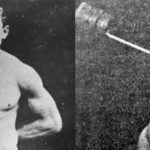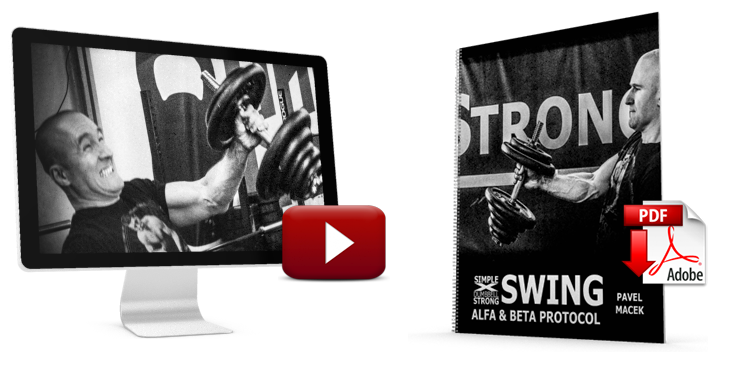If you an press about 110 pounds in the two arm military style you should press about 50 pounds in the one arm military press and about 125 pounds in the bent press.
Getting the weight to the shoulder is of course the first part of the lift. If you happen to be one of the tall fellows who can pull more weight to your shoulder than you can jerk with one hand, you can get great fame by cleaning and bent pressing the high poundage that practice in this lift will make possible for you. If you are a better jerker than a cleaner, you lift the weight to the hip with the assistance of the other hand. To do this, hold the lifting hand with the knuckles in the opposite direction, under the lifting hand. Then with a sudden effort, lift the weight to the shoulder.
One hand the entire way has been used in some sections and it was with this style that the Englishmen, Inch and Aston both pressed more than 300 pounds. In this style the bar is stood on end. The lifter bends under the bar, getting it to drop so that the hand holds it and then is ready for the real part of the lift.
Assuming that the lifter is to press with the right hand, you stand with the feet 18 to 24 inches apart and at right angles to each other. The arm is held well back of the hip, resting tightly against the muscles of the back.
You should not lean only to the left but slightly to the front, and to balance the weight, you will notice that the right leg is straight, that the weight is resting on the hip and can be held easily as the elbow is held in the vertical position, and there is a solid column of bone from the bell to the floor. The left leg is slightly bent. The arm held out straight to the side to balance.
You now commence the lift by leaning to the side and toward the front as you go down. This is why the lift was called by many the “Screw Press,” as you twist to the left and front, keeping your eye on the ball as you bend well over. As you body bends far to the front and side, your arm raises upon the muscles of your bock. At this stage you make a real effort with the arm, pressing it to straight arm’s length overhead. In the meantime, the non-lifting arm has been placed first upon the knee then slid to the side and down, so that the arm and finally the arm pit rests upon the knee.
Straightening up with the weight is one of the hardest parts of the lift. You quickly bend the legs, making the body more erect. Then pressing with the non-lifting hand, you raise to the erect position. The lift is not so hard to perform, as at just two stages of the lift real effort is required. This while pressing the arm straight and while rising with the bell.

1. Starting position in the Bent Press.
2. Bending away from the bar in the Bent Press.
3. Arms straight – legs bent – ready to rise in the Bent Press.
There are several points that you should remember in making this lift. The barbell at the start of the lift will be turned well around so that it is nearly parallel with the shoulders, almost at right angles to the feet.
It is best to learn this lift rather quickly, bending suddenly to the side and front, keeping an eye on the bell and getting the arm straight as quickly as possible. This was the style used by Arthur Saxon, who holds all the records in this lift.
Some lifters prefer, instead of sliding the arm down the entire wy and resting upon the arm pit, to keep the hand upon the knee so that it will bear part of the weight, making it easier for the side and back and assisting in raising to the erect position.
You can easily see how, in performing this lift, the body moves like the thread of a screw. This lift has to be learned, as it doesn’t come naturally. Some will never learn it, while others will get the hang of it in a few days’ time. But it is well worth practicing, as through this lift you can make a better showing than with any other. You can easily learn to press a person weighing as much or more than yourself, and press other heavy objects as well as a barbell.
-
Sale!

GGP: The Great Gama Protocol [ONLINE COURSE]
Original price was: $149.$99Current price is: $99. -

THE FORGE: Full Year’s Transformation Program [ONLINE COURSE]
$499 -
Sale!

SFG I StrongFirst Kettlebell Instructor Certification – November 8-10, 2024, Prague, Czechia
$1395 – $1595 -

Hard Style Dumbbell Swing [VIDEO+MANUAL]
$0












